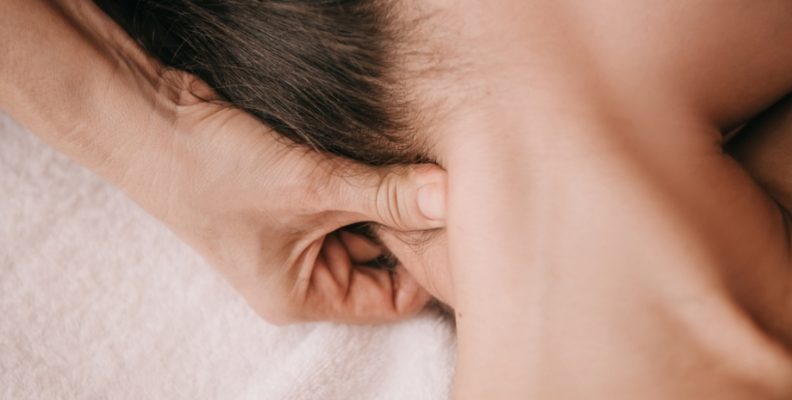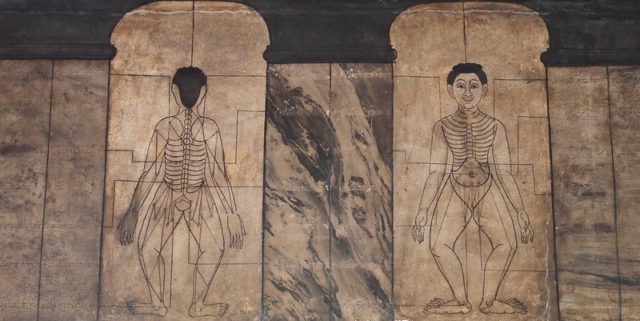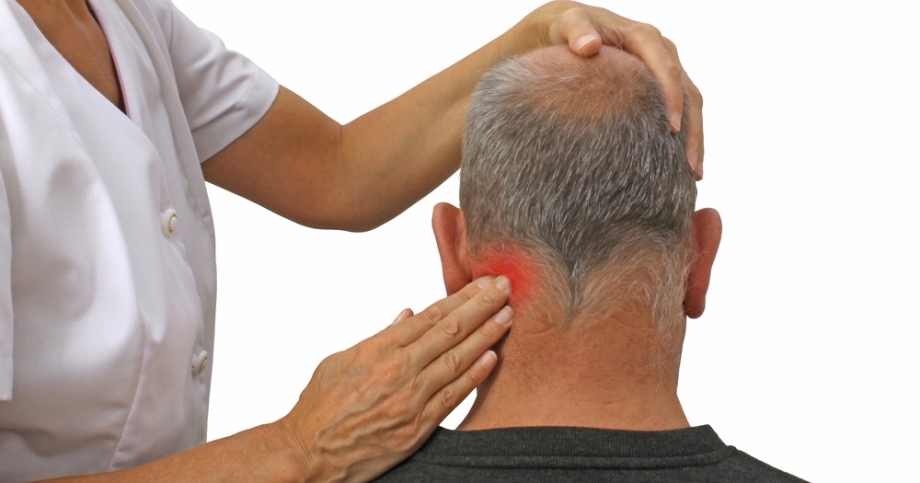
You may notice that so-called trigger points (i.e. myofascial trigger points) are sometimes equated with acupressure points. And indeed, sometimes an acupressure points may also be (or act as) a trigger point (or vice versa), but actually these are two different concepts.
Yet, to understand the difference between trigger points and acupressure points, we first need to discuss the fasciae, myofasciae, and the idea of trigger points.
What Are Fasciae and Myofasciae?
The fasciae (plural of a singular fascia) are bands of sheets of so-called connective tissue beneath the skin in a wavy, web-like pattern, mostly made of collagen and elastin fibers, which attach, stabilize, surround, and separate muscles and other internal organs. The fasciae are flexible and able to resist great tension or forces.
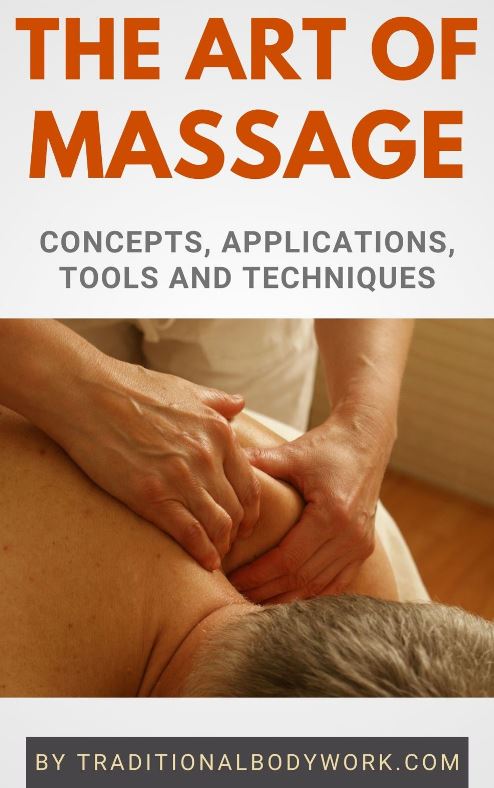
The term myofascia is a combination of myo and fascia where myo is a Greek root word meaning muscle. In fact, the myofasciae are simply a subset of fasciae (they are fasciae) and attach muscles to other muscles, run between and separate them and improve movement, flexibility and functionality. Additionally, they provide a protective layer for blood vessels, nerves, and the lymphatic system.
The fasciae are important because they provide stability and structure to the body, and also enable movement, metabolism, and protection of the vital organs and nervous system, while allowing for communication between cells, with the latter supporting our immune system.
The idea of Myofascial Release Massage is to apply deep and sustained pressure into the body’s connective tissue and myofascial system with the goal of releasing tensions and blockages. As the fasciae form an interconnected web in the body, releasing tension in one fascia or parts of fasciae may affect other fasciae and thus may relieve or correct tensions, postural imbalances, chronic conditions, and unexplained pains elsewhere in the body.
What Are Trigger Points?
Trigger points are small areas of the muscle, fasciae, or myofasciae (or of other types of connective tissue) in which there is a contracture, tension, strain, irritation, sensitivity, or insensitivity of body tissue.
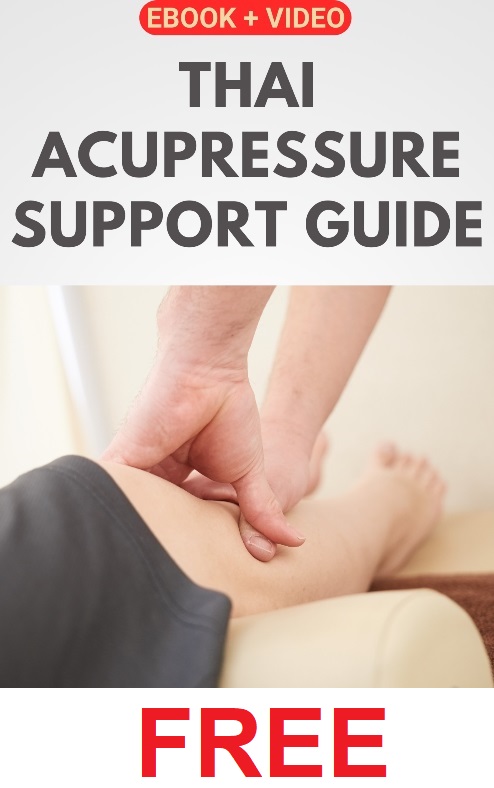
A trigger point — also called myofascial trigger point — can cause pain, fatigue, diminished range of motion, and weakness in the muscle or fascia, and it can lead to so-called referral pain, which means that body parts or areas farther away from the trigger point may experience pain, irritation, dysfunctions, tingling, or numbness.
Trigger Point Release means to come to an alleviation or cure of trigger point disorders through softening of the affected area by clearing its contractions, tensions, adhesions, and so on. This would give relief to the point itself and to potential referral pains.
Several techniques are used to release trigger points, but generally it will be done through pressure of the fingers on the trigger point, which is called digital pressure or acupressure. Nevertheless, broad compression, strokes, friction, vibrations, heat, and stretches — or a combination of techniques — may also be applied.
Trigger Point versus Acupressure Point
Trigger points and acupressure points (the latter also called acupoints or pressure points) have in common that both types of points are usually manipulated through acupressure. In addition, they can both feel sensitive, knotted, hard, tensed, painful, irritated, or numb.

Nevertheless, the theory behind trigger points and acupressure points is vastly different. Acupressure points are typically related to locations on well-defined Life Force Energy Channels and are rather “energetic points,” while trigger points are explicitly “physical,” related to muscles or fasciae which can occur at any (random) location in the body.
In fact, acupressure points relate to the subtle body (energetic body) and are manipulated in order to manage “energy flow,” while trigger points relate to the gross body (physical body) and are manipulated to directly manage body tissues.
Another difference is that trigger points — when pressed upon — may cause referral pain in other parts of the body. This is typically not the case with acupressure points. Yet, if there is referral pain when pressing on an acupressure point, one could say that the acupressure point in question is likewise a trigger point, or perhaps better said: located near, under, or upon a trigger point.
Nevertheless, Trigger Point Release Massage (or Trigger Point Therapy) may be used in conjunction with Acupressure Massage. In fact, the first may support the latter, because physical tensions, constrictions, adhesions, or numbness typically (negatively) influence the flow of Prana Life Force through Energy Channels or make it difficult to access acupressure points.
In addition, when Prana starts to flow freely through an Energy Channel, that by itself may likewise resolve trigger points it finds on its way. We should keep in mind that trigger points may have been formed by congested or — by contrast — weakened Life Force Energy flow at a specific body location i.e. acupressure point.















